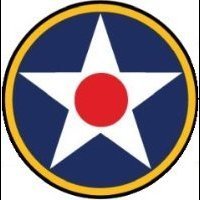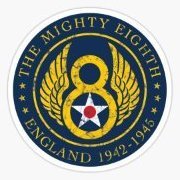-
Posts
41 -
Joined
-
Last visited
Contact Methods
-
Website URL
https://www.aircorpslibrary.com/
Profile Information
-
Gender
Female
-
Location
Bemidji, MN
Recent Profile Visitors
The recent visitors block is disabled and is not being shown to other users.
-
 RadBaron reacted to a post in a topic:
Luscombe Phantom
RadBaron reacted to a post in a topic:
Luscombe Phantom
-
 MikeMaben reacted to a post in a topic:
Call for project pics to be featured at IPMS Nationals 2024!
MikeMaben reacted to a post in a topic:
Call for project pics to be featured at IPMS Nationals 2024!
-
 LSP_K2 reacted to a post in a topic:
Call for project pics to be featured at IPMS Nationals 2024!
LSP_K2 reacted to a post in a topic:
Call for project pics to be featured at IPMS Nationals 2024!
-
 MikeMaben reacted to a post in a topic:
Luscombe Phantom
MikeMaben reacted to a post in a topic:
Luscombe Phantom
-
 MikeMaben reacted to a post in a topic:
Call for project pics to be featured at IPMS Nationals 2024!
MikeMaben reacted to a post in a topic:
Call for project pics to be featured at IPMS Nationals 2024!
-
 ChuckD reacted to a post in a topic:
Luscombe Phantom
ChuckD reacted to a post in a topic:
Luscombe Phantom
-
 LSP_K2 reacted to a post in a topic:
Call for project pics to be featured at IPMS Nationals 2024!
LSP_K2 reacted to a post in a topic:
Call for project pics to be featured at IPMS Nationals 2024!
-
Yeah, I think you would be hard pressed to find a business of any size that was functioning during WWII that wasn't producing some part or component for the war effort. What gets really hard is when a company was making something completely unrelated, like air conditioners and then started making aircraft actuators (just an example), and then post war immediately stopped actuator production and went back to making air conditioners. I find this a lot, and it usually means that any proprietary data that they would have had from the 1940s is long gone - probably purged by a later owner or manager. It's sad, but also the reality of not knowing the value of what you have until much later!
-
 MikeMaben reacted to a post in a topic:
Call for project pics to be featured at IPMS Nationals 2024!
MikeMaben reacted to a post in a topic:
Call for project pics to be featured at IPMS Nationals 2024!
-
 denders reacted to a post in a topic:
Luscombe Phantom
denders reacted to a post in a topic:
Luscombe Phantom
-
 Archimedes reacted to a post in a topic:
Luscombe Phantom
Archimedes reacted to a post in a topic:
Luscombe Phantom
-
 AirCorps Library reacted to a post in a topic:
Spitfires, and now Hurricanes - new information
AirCorps Library reacted to a post in a topic:
Spitfires, and now Hurricanes - new information
-
For anyone who is interested in the Luscombe Phantom, I'm really excited to announce that we just added a set of original engineering drawings for this aircraft to the AirCorps Library website! The set includes 461 original Luscombe drawings, each of which is searchable by its part/drawing number. In the coming months we'll also be working to add descriptions to each drawing so that searching for what you need is a bit easier. The Phantom was Luscombe's first aircraft and only a handful were built. Currently there are several of these very rare birds under restoration, including one by Kevin Eldridge (who provided us with the drawings and is mentioned in the attached video from 2021 where the only 2 airworthy Phantom's were in attendance!). In my humble opinion there is not much cooler than the Phantom cowling, and I hope some of you can use these drawings on current or future builds! Note - you do have to be a member of the AirCorps Library website to access these drawings (and the other half a million engineering drawings we have), but it's only $9 bucks a month or $75 for the year to start a subscription.
-
Many model builders use the drawings in the Library to confirm that their parts match the original engineering data exactly. Using these drawings you can do things like confirm exact rivet placement, understand structural differences between aircraft models, get exact dimensions of every part for scaling, find information on original materials used, and much more. I'd say about half of the users of our site are model builders who are using our data to make their projects incredibly accurate. (I'm thinking of you @airscale !) I'm definitely not looking for any specific proof of use, and there is no situation where anyone would "have to" use the site. I'm just on the hunt for people who know that they have used the data on the website as a reference when working on their build!
-
The drawings we have on the site are for parts and assemblies that were being fabricated specifically by aircraft manufacturers during WWII. Drawings and engineering data for parts that were being fabricated by sub-contactors, and then purchased already assembled and ready for installation on an aircraft, would have been held by said sub-contractors. Unfortunately, this sub-contractor data is really difficult, if not impossible to find - but I'm always looking! Bombs would have definitely fallen into this group as they were not manufactured by say Curtiss, Boeing, North American, Republic etc. Hopefully someday I'll find a cache of this data and make it available!
-
 AirCorps Library reacted to a post in a topic:
Call for project pics to be featured at IPMS Nationals 2024!
AirCorps Library reacted to a post in a topic:
Call for project pics to be featured at IPMS Nationals 2024!
-
Unless you are talking about something different (correct me if you are) there were flight operating instruction that were kept behind the pilot and co-pilot seats of the B-17. It is referenced in the maintenance manual for the G model. The operating instructions were made up of four charts: an operation chart, range chart, general operating instructions, and pitot correction, stalling speeds, bomb loading, and take-off, climb, and landing charts. These four charts were pressure sealed between sheets of cellulose acetate into a double sided folder of sorts, with a cloth hinge so that it could be folded in half. The cloth hinge was also secured with 8 AN240 eyelets and had a beaded chain looped through one upper right eyelet for hanging. Unfolded, the size of the "folder" was 19.3 inches long by 11.25 inches tall. The actual drawings for the entire armor plate installation, which shows the pilot and co-pilot armor plate (part number 65-7387) does have the disclaimer "marked side of armor plate to be installed against seat back". However, the drawings for the individual armor plate panel (part numbers 3-15141 for the B-17F, and 6-11597 for the B-17G) only give dimensional and material information, with nothing about a placard or decal to be affixed anywhere.
-
Have you used the information on AirCorps Library in a current or past build? I'll be attending Nationals this June in Madison, WI and will have an AirCorps Library booth in the vendor area. I'd like to create a video to play at the booth that highlights LSP member projects who have used the AirCorps Library site during the course of their build. If this applies to you, and you are interested in sharing your project, please post any pictures you would like me to use, along with the following information (as I would like to give credit where credit is due!) Your Name and location (such as state or country) Project specifics, such as scale, serial number, aircraft model, theater, or any other identifying information Length of time spent on the build (feel free to send in-process pictures if you're not finished with a project but would still like to be included!) A sentence or 2 about how you used the website (not required, but appreciated) If you would not like to have your name listed along with your project that is fine, just let me know and I'll leave that bit out. I'm really excited to be attending Nationals for the first time, and I can't wait to see you all there and highlight some of your great work!
-
If you're interested in the original data, there were several different drawings for this decal that Boeing produced. The drawing/part number for the B-17F placard is 9-3745 (sheet 1). The drawing for the B-17G is 9-3745 (sheet 1A and sheet 1B). All three of these drawings list the overall dimensions of the placard as 12.50 x 12.25 but includes more info on where the text is to be placed etc. I believe that @thierry laurent may have used these drawings to recreate the placard that he posted above, but if anyone would like to look at the additional drawings and the data they contain you can use the links above to see a preview, or if you're already a member of AirCorps Library they will take you directly to the drawing itself once you login!
-
MightyEighthModels started following AirCorps Library
-
That's very true Tim - modelers have different needs than the restoration community, and it's really fun to help on both sides! Plus there are hundreds of thousands more model builders than there are people who restore and fly the actual aircraft! For this reason I'm planning on having a booth at IPMS in 2024 - excited to meet some of you in person! Ester
-
 AirCorps Library reacted to a post in a topic:
Aircorps Library - Modelmaking & Warbirds combine
AirCorps Library reacted to a post in a topic:
Aircorps Library - Modelmaking & Warbirds combine
-
 AirCorps Library reacted to a post in a topic:
Aircorps Library - Modelmaking & Warbirds combine
AirCorps Library reacted to a post in a topic:
Aircorps Library - Modelmaking & Warbirds combine
-
You are correct! This airplane sat in the jungle for years, then went to Australia, and came to our shop in 2010, and we've been working on it ever since!! Some fun facts for everyone reading this feed: When we receive an aircraft the entire thing is disassembled and every part is inspected for airworthiness. Our goal is to keep as much of the original airframe in the finished restoration as possible (while considering the safety of the pilot) Bonnie in particular can be considered as 30% original. 10% of her parts are original to the aircraft that was pulled out of the jungle in New Guinea 20% of her is new-old-stock parts that we sourced from collections all over the world and were still airworthy from the 1940's! Of course this means that we had to fabricate 70% of the aircraft in house! No small feat when you consider that the aircraft has 40,000 parts (not including the engine and propeller assemblies!)
-
This SN aircraft was very likely flown by Bill Dunham, as it was assigned as a training aircraft to his squadron. Because it was originally a training aircraft it was never assigned to a specific pilot, but flown by many. Due to this, the owner decided to choose a pilot who flew in the squadron, and paint this aircraft to honor him, rather than painting it in a generic scheme that wouldn't have one pilot attached to it. Bill Dunham was an incredible man, and we were very lucky to have both his daughters present at Oshkosh, and get to sit in the airplane, and watch it fly!



